INNOVATOR UPDATE: JASON MARION
2021 GHIC Innovation Prize Winner:
Jason Marion
2021 GHIC Innovation Prize winner Jason Marion is a rising star in the world of hydro philanthropy. With the help of Kenyan students at Eastern Kentucky University (EKU) and collaborators at Kisii University in Kenya, Jason developed ColiGlow, a low-cost, field-developed kit that tests E. coli levels in contaminated water.
Jason first learned about water testing methods while working for the Ohio state park system. He later earned a PhD in Public Health in Environmental Health Sciences and Epidemiology at The Ohio State University. After completing a postdoctoral fellowship, Jason began work at Eastern Kentucky University as an Associate Professor of Environmental Health Science. During his time at EKU, Jason developed an alternative approach to a more expensive IDEXX water testing technology, which uses fluorescence to indicate the presence of E. coli, for use in low-resource settings and named the product ColiGlow. ColiGlow was first field tested in Kentucky and later in a community near Eldoret, Kenya. According to Jason, when ColiGlow and the more expensive and cumbersome IDEXX kits were used side-by-side, they produced “strikingly similar results, which was wonderful.”
Jason first travelled to Kenya because two Kenyan students at EKU expressed their desire to conduct a public health project in their home country. These students are “well-established in their communities,” which enabled Jason to build rapport with the local community in Kenya and learn about the settings in which the product would be used. Jason and his team developed ColiGlow in response to a need expressed by community members and later received a request for water testing kits directly from the Vice Chancellor of Kisii University.
The GHIC Innovation Prize will be used to fund ColiGlow kits to enable citizen scientists to examine water sources in Kisii to determine E. coli and drug-resistant E. coli densities. This testing capacity is vital in Kisii, where over a million individuals obtain their drinking water from untreated springs, most of which have some amount of fecal contamination. (1) Assessing which springs contain the greatest quantity of E. coli (and, by proxy, other pathogens) may enable citizen scientists to reduce the burden of gastrointestinal illness, which is estimated to impact 20-35% of the county’s population in a given month. (2)
The Innovation Prize has also generated buzz around ColiGlow in the Appalachian region and several organizations, including Watershed Watch of Kentucky, are planning to conduct independent assessments of ColiGlow through recently awarded funds the University of Kentucky’s Center for Appalachian Research in Environmental Sciences (UK-CARES).
Jason hopes that ColiGlow will be useful to people around the world and that a sustainable funding model might be developed by funding donations or discounted pricing for the product in low-resource settings through sales in higher resource settings. For example, community volunteer groups in Appalachia have more resources than most of the communities and individuals with whom Jason works in Kenya. If he is able to sell ColiGlow kits for a modest price to domestic customers, then he may be able to direct the proceeds to support the purchase of the kits in communities in Western Kenya.
Whether Jason is working in Kentucky or Kenya, he always seeks to empower citizen scientists. Jason appreciates that citizen scientists play a vital role in global development, and he is not alone. The United Nations and the World Health Organization have stated that citizen scientists are one of the keys to reducing diarrheal illness through the improvement of water and sewage systems.
In Jason’s view, empowering citizen scientists means nourishing and harnessing the entrepreneurial talent of individuals living in the Global South. “The possibilities are infinite when you give people the ability to test their own water. They can start altering things.” Community members can take a variety of actions—from spring restructuring, to dam building, to the creation of new springs—when they are given access to “more data and knowledge.”
Jason noted that citizen scientists are poised to make a positive impact on their communities because “they’re the eyes. They care about their communities more than any government scientists or academic scientists . . . .” Citizen scientists are motivated to transform their local environment because water quality affects their day-to-day health and the health of their families and communities.
Jason acknowledges that some of the best innovations in human history have emerged when humans were forced to “figure something out” without the necessary resources. He cites the example of NASA researchers, who found a way to provide water to astronauts in space stations, where water is scarce compared to on Earth. Jason believes that analogous innovations can develop as a result of the work of citizen scientists in low resource settings such as Kisii County.
The GHIC Innovation Prize will allow Jason to provide approximately four hundred ColiGlow kits to citizen scientists in Kisii, kickstarting their entrepreneurial potential and enabling them to address water contamination in their communities. Jason is humble, dedicated to relationship-building, and responsive to local needs. His efforts will doubtless transform water testing in Kisii and Kentucky and inspire students to follow in his footsteps. To learn more about Jason Marion and ColiGlow, visit the website: https://www.coliglow.com/.
To learn more about the Global Health and Innovation Conference, visit the website: https://ghic.uniteforsight.org/
Footnotes
(1) Misati, A. G. (2016). Household safe water management in Kisii County, Kenya. Environmental health and preventive medicine, 21(6), 450-454.
(2) Brooks, J. T., Ochieng, J. B., Kumar, L., Okoth, G., Shapiro, R. L., Wells, J. G., ... & Slutsker, L. (2006). Surveillance for bacterial diarrhea and antimicrobial resistance in rural western Kenya, 1997–2003. Clinical infectious diseases, 43(4), 393-401. See also, Swierczewski, B. E., Odundo, E. A., Koech, M. C., Ndonye, J. N., Kirera, R. K., Odhiambo, C. P., ... & Oaks, E. V. (2013). Enteric pathogen surveillance in a case-control study of acute diarrhoea in the town of Kisii, Kenya. Journal of medical microbiology, 62(11), 1774-1776.


